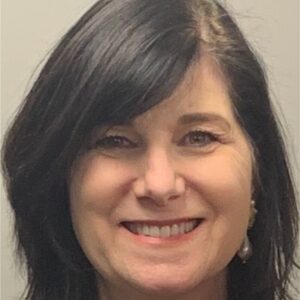O Administrator, DON, Where Art Thou?
| O Administrator, DON, Where Art Thou? |
| With turnover rates on the rise, where will tomorrow’s administrators and DONs come from? BY TODD HUTLOCK, ASSISTANT EDITOR |
| The staffing crisis plaguing the long-term care field is already bad enough, but with the baby boomers waiting in the wings, things could get far worse before they get better. Turnover rates among managers, not just frontline workers, are sky-high, and there are fewer and fewer qualified managers interested in entering the LTC workplace. |
| While the lack of nurses, DONs, and other skilled staff continues to be a problem (see sidebar), more and more nursing home administrators are looking to greener pastures and leaving the LTC field altogether. And, with the negative image presently hung around LTC’s neck, finding new administrators has proved problematic. This raises some intriguing questions: How do we recruit qualified new people into the field? What can we do to keep them from leaving once they’re in place? One group that has definitive ideas on the subject is the American Association of Homes and Services for the Aging (AAHSA). AAHSA’s recently formed New Leaders Task Force program is aimed directly at bringing people into the aging-services administration profession. The task force is collaborating with a number of prominent universities: The Heller School for Social Policy and Management at Brandeis University; The School of Public Health and Health Services at The George Washington University; The Johns Hopkins University School of Professional Studies in Business and Education; the University of North Texas School of Community Service; and the University of North Carolina at Chapel Hill School of Public Health. “The New Leaders Task Force is part of AAHSA’s Leadership Development Initiative, which has been formed because AAHSA has heard from members that attracting, retaining, and developing leadership is one of the most crucial issues they deal with today,” explains Susanne Matthiesen, director of business development, Continuing Care Accreditation Commission, AAHSA. “With the challenges facing our field, strong leadership teams are essential to help AAHSA organ-izations prepare for the future. “The goals of the task force are to ensure the development of an adequate number of outstanding graduate and postgraduate fellowships to facilitate education for capable and qualified professionals interested in aging-services careers; attract potential leaders into graduate education programs relevant to the aging-services field; and to develop mentoring strategies to foster information sharing between established and incoming aging-services leaders.” While the implementation of AAHSA’s task force is certainly a step in the right direction, the lack of students interested in a long-term care administration career is already a problem. “In communicating with my colleagues at academic institutions that offer graduate-level programs in health-services administration, business, and public health, there are very few students actively seeking aging services as a field of choice for their career,” says Matthiesen. “While some professionals are looking at LTC as an option when seeking a career, many of them find the state licensure requirements, particularly the AIT process, to be barriers to entry, because few provider organ-izations pay AITs a salary while they are working in that capacity at their organization. For students who have loans to repay or professionals who have families to support, it is very challenging to fulfill this requirement.” Another part of the problem is the manner in which the position of nursing home administrator is promoted to undergraduate and graduate students. To cultivate interest in the field, LTC administration needs to be presented to students as a “hot” career choice-and not just at the collegiate level. “I do not think the aging-services field is being actively promoted as a career of choice to undergrads and grad students, but I really think that we need to expose children in grade school and high school to our field so that they understand what long-term care is and what career opportunities are available to them,” says Matthiesen. “Part of this education proc-ess is the responsibility of professionals currently in the field. We need to be actively going into the community and the public education system and talking about aging issues, providing information about nursing homes, and discussing careers in our field. We also need to be talking to young people about the positive aspects of our field, such as making a difference by caring for residents, managing staff, creating innovative programs to enhance quality, strategic planning, and all the other things that are positive career-development aspects of working in a nursing home.” Needless to say, it takes a certain kind of person to become an LTC adminis-trator; this field is not for everyone. Matthiesen suggests that potential administrators should possess the following qualities in order to face the challenges of long-term care: “Creativity, strategic-planning experience, excellent financial skills, comfort with technology (including database and Internet use), personnel-management experience focused on a coaching model, and the ability to communicate and form productive relationships with many audiences- including regulators, the media, and potential strategic business partners.” These qualifications, while impressive-sounding, are not such rare skills that many young people don’t possess them already or couldn’t readily work toward them; quite the contrary. The difficulty lies in convincing these students that they should devote their skills to a career choice that appears to offer, at the moment, more headaches than happiness. While getting young people into the long-term care field in the first place is a challenge, keeping them there is just as difficult, since they, too, are involved in today’s turnover. Matthiesen suggests that there is more that could be done by those already in the field to convince new administrators to weather the storm and remain in long-term care: “We should provide incentives that foster innovation and quality improvement, or provide professional development opportunities-such as serving as an evaluator for an accreditation organization or attending national meetings where they can learn from peers. Fostering professional advancement and creativity is important, not only to enhance the administrator’s performance but also to encourage management consistency and create a climate that improves quality of resident care.” It will take a number of years to determine whether AAHSA’s New Leaders Task Force program is successful, but the need for new administrators is not likely to dissipate anytime soon. “None of these issues is going away,” Matthiesen warns. “As the baby boomers age and as their parents live longer as a result of medical advances, our field will certainly face a management crisis. For those people who find our field challenging and interesting, this crisis could also offer wonderful opportunities.” Let’s hope that today’s youth can learn to see the opportunities and not just the discouraging pitfalls. NH |
| Students who would like to learn more about the New Leaders Task Force program or long-term care providers who would like to parti-cipate as preceptors/mentors can visit www.aahsa.org/newleaders.htm, |
| phone Susanne Matthiesen at (202) 508-9475, or e-mail smatthiesen@aahsa.org. |
| To comment on this article, send e-mail to hutlock0103@nursinghomesmagazine.com. |
| What is the status of the long-term care nursing crisis from your point of view? Warden-Saunders: The crisis is present and will be so for some time to come. “Critical” is the appropriate word, based on the shortage of nurses. Existing and future healthcare needs, especially in our nursing homes, far exceed the availability of nurses. This could lead to a fear of mine: With the unavailability of nurses, lesser-trained personnel could be replacing the professional nurse in many situations. This would be a disastrous situation that would further impact the quality of care delivered to our long-term care patients. Is the position of DON being actively promoted to undergraduate and graduate students? How can it be presented as a “hot” career choice? Young men should be encouraged to enter the nursing field, too, and long-term care needs to get its share of those young men. Again, this career in nursing should be promoted as a primary career. How would you describe recent trends in terms of young people who are entering the profession? What do young people you encounter say/think about long-term care? |
| How do you think the position of DON can be presented as a viable and attractive career goal despite some of the bad press long-term care receives? Warden-Saunders: Future nurses should be educated as to the many challenges and skills involved in the care of the long-term care patient. Yes, I say “patients” rather than “residents,” because that is what they are. When we remove the clinical reference, why would an individual pursuing a clinical career be interested in providing care to “residents”? This term was adopted some years ago when regulatory agencies wanted a more “homelike” atmosphere in the nursing home. Now we are caring for immediate postop patients and many other acutely ill patients. We need to describe the clinical issues in long-term care to aspiring young nurses. We need to tell them that long-term care nursing is the most challenging nursing position today, and that they will be caring for patients who have a multitude of disorders: heart and respiratory diseases, cancer, gastrointestinal diseases, diabetes, musculo-skeletal disorders, end-of-life issues, Parkin-son’s disease, multiple medications, dementia, etc. For the most part, in hospital nursing nurses are dealing with isolated disease entities. In long-term care, they are dealing with multiple problems. How much more challenging can it be? What other challenges do you think tomorrow’s long-term care nurses will face? What qualities do you think future nurses should have to enable them to better face those challenges?
After nurses have come on board, what needs to be done to keep them? Are there any plans to partner with other associations/groups to address this issue? |
I Advance Senior Care is the industry-leading source for practical, in-depth, business-building, and resident care information for owners, executives, administrators, and directors of nursing at assisted living communities, skilled nursing facilities, post-acute facilities, and continuing care retirement communities. The I Advance Senior Care editorial team and industry experts provide market analysis, strategic direction, policy commentary, clinical best-practices, business management, and technology breakthroughs.
I Advance Senior Care is part of the Institute for the Advancement of Senior Care and published by Plain-English Health Care.
Related Articles
Topics: Articles , Facility management , Leadership











